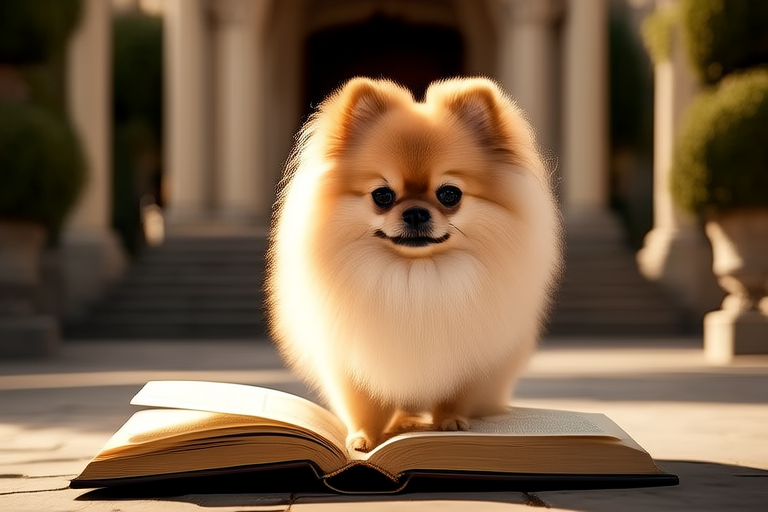The Rich History of Pomeranians: From Ancient Times to Royal Companions
Imagine a world where dogs were not just pets but also valuable working animals. In this world, the ancestors of our beloved Pomeranians were large, robust sled dogs known as the Samoyed, Spitz-type breeds, and other similar canines. These dogs were crucial for herding sheep and pulling sleds across the harsh landscapes of Northern Europe and Asia. The story of the Pomeranian is a fascinating journey from these working origins to the small, fluffy companions we adore today.
Origins in Ancient Times
The Pomeranian’s history begins in the region after which it was named – Pomerania, an area along the southern shore of the Baltic Sea. This region, now part of Poland and Germany, was home to a variety of Spitz-type dogs, which were well-suited to the cold climate and rugged terrain. These early Pomeranians were much larger than the ones we know today, often weighing up to 30 pounds. They were used for herding livestock and protecting property.
Transition to Smaller Sizes
Over time, selective breeding practices began to change the size and appearance of these dogs. As the breed moved further west and south into Europe, smaller variants became more popular. This shift was partly due to changing needs; smaller dogs were easier to keep in urban settings and were better suited as companions rather than working animals. The process of reducing the size of the Pomeranian involved careful selection of breeding pairs that produced progressively smaller offspring. This selective breeding over many generations gradually reduced the average size of the breed.
The Role of European Royalty
The Pomeranian’s transformation into a royal favorite played a significant role in its evolution. One of the most famous Pomeranian owners was Queen Victoria of England. In 1888, Queen Victoria acquired a small Pomeranian named ‘Marco,’ which sparked a trend among the aristocracy. Queen Victoria’s affection for Marco and subsequent Pomeranians she owned helped to popularize the breed throughout Europe. Her influence extended beyond mere ownership; she actively participated in breeding programs, which further refined the characteristics of the Pomeranian.
Other notable figures who contributed to the popularity of Pomeranians include Marie Antoinette, who owned several Pomeranians before the French Revolution, and King George III, who had a fondness for the breed. Their patronage ensured that Pomeranians remained fashionable among the elite, influencing breeding practices and the public’s perception of the breed.
Genetic Factors and Breeding Practices
The genetic changes leading to the smaller size of Pomeranians involve complex interactions between genes controlling body size, metabolism, and growth rates. Selective breeding has focused on traits such as coat color, texture, and temperament, alongside size reduction. Breeders have chosen dogs with desirable traits to mate, ensuring that these characteristics are passed down to future generations. This process has resulted in the diminutive, fluffy Pomeranian we recognize today.
Understanding the History Enhances Modern Bond
Learning about the rich history of Pomeranians can deepen the connection between owners and their pets. Understanding the breed’s background provides insight into their behavior, health concerns, and care requirements. For instance, knowing that Pomeranians are descendants of hardy working dogs can help owners appreciate their resilience and adaptability. It also explains why they may exhibit certain behaviors, such as herding or protective instincts.
Moreover, recognizing the breed’s royal heritage can foster a sense of pride and responsibility in ownership. Owners can feel a special connection to the lineage of their pet, knowing that they are caring for a breed once cherished by kings and queens. This shared history can enrich the relationship between owner and dog, creating a bond based on mutual respect and admiration.
In conclusion, the journey of the Pomeranian from large working dog to royal companion is a testament to the power of selective breeding and the enduring appeal of these charming creatures. Their history is filled with tales of royal favor and dedicated breeding efforts, all contributing to the delightful breed we know today. By exploring this rich past, modern owners can gain a deeper appreciation for their furry friends and strengthen the bond they share.
